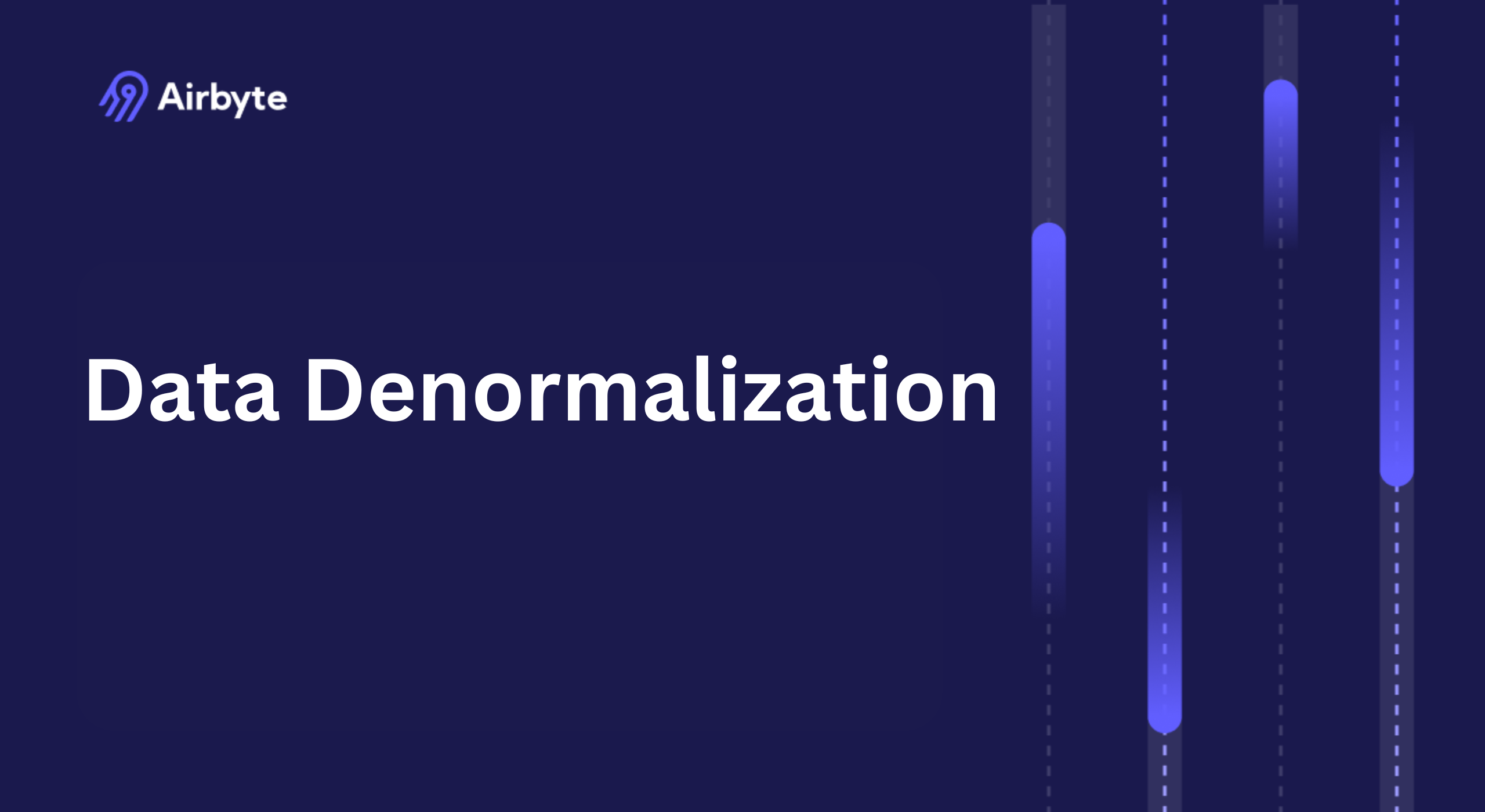Data Denormalization: What It Is and Why It’s Useful
Summarize this article with:
✨ AI Generated Summary
Data denormalization introduces controlled redundancy into normalized databases to improve query performance by reducing complex joins and enabling faster data retrieval, especially in read-heavy workloads like analytics and AI. Key techniques include pre-joining tables, mirrored tables, materialized views, and derived columns, supported by advanced consistency strategies such as transactional triggers, Change Data Capture (CDC), and event-driven synchronization.
Modern cloud-native platforms (e.g., Snowflake, Databricks) and AI-driven tools enhance denormalization by providing elastic scaling, automated maintenance, and predictive optimization, while balancing trade-offs like increased storage and write complexity. Best practices emphasize normalizing first, targeting high-latency queries, continuous monitoring, and leveraging tools like Airbyte for streamlined data integration and synchronization.
Modern data denormalization involves sophisticated techniques that balance performance optimization with data integrity.
While normalized databases are excellent for keeping data organized, they can slow down processes requiring complex queries. In these scenarios, you can utilize the data-model denormalization concept to enhance database query performance and facilitate faster data retrieval.
This article will help you learn how data denormalization works, explore its techniques, understand its benefits, discover use cases, and review best practices.
What Is Data Denormalization?
Data-model denormalization is an optimization process that introduces pre-computed redundancy into a normalized database. While data normalization reduces duplication and ensures data integrity by breaking data into smaller, related tables, denormalization sacrifices some of this integrity to improve read performance. A denormalized database is not the same as a database that has never been normalized; denormalization is typically applied after the database-normalization process.
Key features:
- Enhanced Query Performance – Reduces complex joins by consolidating data into a single table, speeding up frequent read operations.
- Simplified Data Retrieval – Fewer tables or pre-computed formats allow faster access for end-user applications.
- Quick Aggregation – Storing aggregated values (totals, averages, counts) minimizes runtime calculations and accelerates analytical queries.
How Does Data Denormalization Work?
To appreciate denormalization, first consider how data is organized in a normalized database, then see how denormalization can improve performance.

Imagine an e-commerce platform with Customers and Orders tables linked by CustomerID. To display all orders for a customer, the site must join these tables—an expensive operation at scale.
To mitigate this cost:
- Copy the
Namecolumn from Customers into Orders, eliminating the join.

- Create a new table that merges both tables' data.

What Are the Five Core Techniques of Data Denormalization?
1. Pre-Joining Tables
Duplicate specific columns across tables to avoid frequent joins.
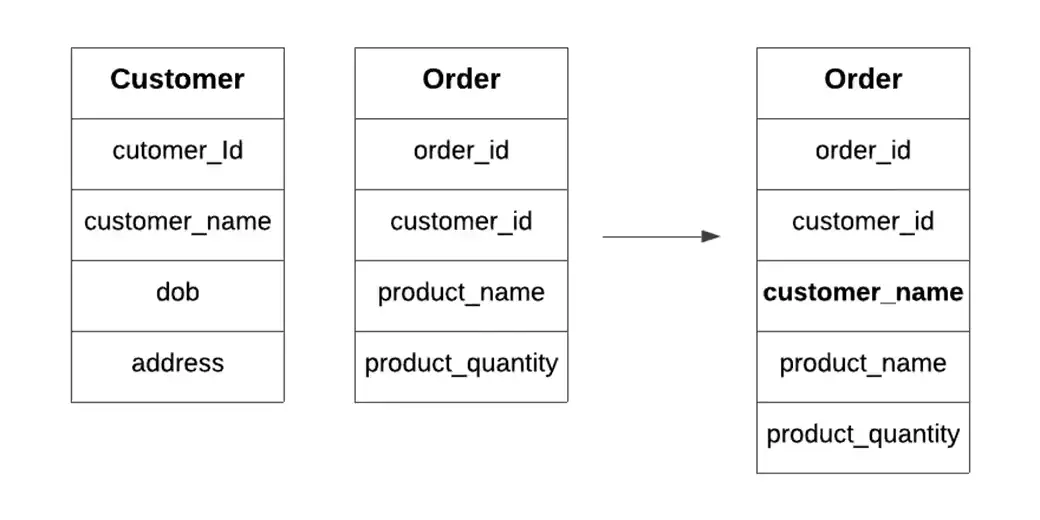
2. Mirrored Tables
Maintain a full or partial copy containing related data to simplify queries.
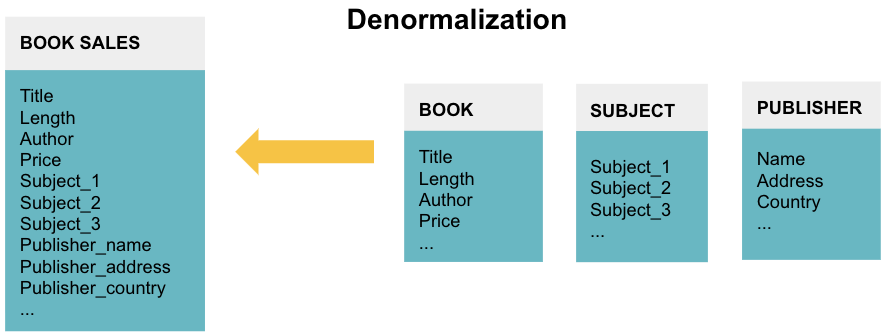
3. Table Splitting
Break a table into multiple tables for faster access.
Horizontal Splitting


Vertical Splitting

- Adding Derived Columns
Store pre-calculated values to avoid runtime computations.


5. Materialized Views
Persist query results as a table for fast access.
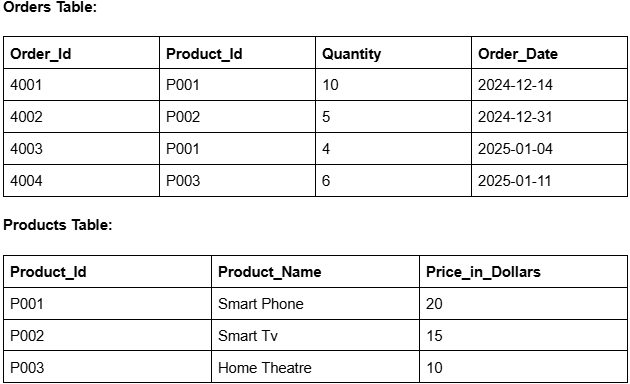
What Are Advanced Consistency Management Strategies for Denormalized Systems?
Maintaining data consistency across denormalized structures represents the primary challenge in implementing redundancy-based optimization strategies. Modern approaches leverage sophisticated synchronization mechanisms, automated monitoring frameworks, and architectural patterns specifically designed to balance performance gains with data integrity requirements.
Transactional Triggers and Application-Layer Logic
Database triggers provide real-time synchronization by executing predefined scripts upon data modification events. When implementing denormalization through triggers, updates to source tables automatically propagate changes to all dependent denormalized copies within the same transaction boundary. For example, an AFTER UPDATE trigger on a customer name field can propagate changes to all denormalized order records containing that name, ensuring atomicity through ACID transaction guarantees.
Application-layer logic offers an alternative approach by encapsulating dual updates within business operations. This method maintains control over synchronization timing and error handling while ensuring both source and denormalized updates succeed or fail collectively. The approach proves particularly valuable in microservices architectures where database triggers cannot span service boundaries, requiring application coordination for consistency maintenance.
Change Data Capture and Event-Driven Synchronization
Change Data Capture systems like Debezium or Oracle GoldenGate stream database change events to downstream consumers, enabling real-time denormalization without direct database coupling. CDC solutions capture row-level modifications at extremely low latency, transforming them into structured events that automatically synchronize denormalized representations while eliminating the batch-oriented refresh cycles that traditionally created data staleness.
Event-driven architectures complement CDC implementations by providing reliable message delivery and processing guarantees. When source tables undergo modifications, CDC pipelines publish change events to message brokers, which downstream services consume to update materialized views, derived columns, and mirrored tables. This approach enables eventual consistency models where denormalized structures achieve synchronization within defined time windows rather than requiring immediate consistency that could impact write performance.
Command Query Responsibility Segregation Integration
CQRS architectures naturally align with denormalization strategies by isolating write-optimized normalized structures from read-optimized denormalized views. The write side maintains normalized schemas that ensure data integrity and support transactional operations, while the read side projects these changes into denormalized structures optimized for specific query patterns and access requirements.
The separation enables independent scaling where write models can optimize for transactional throughput while read models optimize for analytical performance. Event sourcing frequently complements CQRS implementations by recording state changes as immutable, timestamped sequences rather than overwriting current state, providing audit trails and enabling temporal consistency where projections can be rebuilt to any historical point for reconciliation purposes.
Automated Monitoring and Reconciliation Frameworks
Modern denormalization implementations incorporate autonomous monitoring systems that continuously track data drift between source and denormalized copies through checksum comparisons and statistical analysis. These systems establish baseline consistency metrics and trigger automated reconciliation workflows when divergence exceeds defined thresholds, eliminating the manual intervention traditionally required when processing gaps occur.
Self-healing pipelines automatically detect and resolve data inconsistencies in denormalized structures through integrated anomaly detection algorithms. When inconsistencies emerge from pipeline failures, data corruption, or synchronization issues, these systems automatically rebuild denormalized tables using backup sources or alternative data pathways without triggering operational disruptions, maintaining service level agreements through automated resource scaling during large historical gap processing.
How Do Cloud-Native Platforms Transform Denormalization Implementation?
Cloud-native data platforms fundamentally alter the economics and architectural patterns of denormalization by providing elastic scaling, separation of storage and compute resources, and advanced optimization engines that transform traditional performance trade-offs into strategic competitive advantages.
Elastic Storage and Compute Separation
Modern cloud platforms like Snowflake and Databricks decouple storage costs from compute resources, making large-scale denormalization economically feasible where legacy systems would incur prohibitive overhead for duplicated data. Cloud object stores offer near-infinite scaling at marginal cost, while compute resources scale independently based on query demands rather than storage requirements, fundamentally changing the cost structure of redundancy-based optimization strategies.
This separation enables organizations to implement extensive denormalization across terabyte-scale datasets without the storage cost penalties that traditionally limited redundancy strategies. Snowflake's micro-partitioning automatically optimizes physical storage for denormalized tables through advanced compression techniques, while Databricks' Delta Lake provides ACID-compliant transactions specifically designed for denormalized architectures with automatic file compaction and intelligent indexing capabilities.
Dynamic Tables and Declarative Automation
Snowflake's Dynamic Tables replace manual denormalization pipelines with declarative constructs that automatically maintain denormalized datasets using incremental refreshes through streams and tasks architecture. Users define SQL transformations while Snowflake handles change data capture, scheduling, and dependency management, eliminating the operational complexity traditionally associated with maintaining synchronized redundant structures across large-scale data environments.
Databricks Delta Live Tables provides similar capabilities through native stream-static joins that continuously denormalize real-time data streams against slowly changing dimension tables with automatic watermark handling. These declarative frameworks abstract the synchronization complexity while providing enterprise-grade monitoring and error handling capabilities that ensure denormalized structures maintain consistency without manual intervention during operational disruptions or scaling events.
Intelligent Materialized View Management
Cloud platforms have evolved materialized views from static snapshots into dynamically managed denormalization assets with sophisticated optimization capabilities. Modern implementations automatically determine refresh frequencies based on usage patterns, cost constraints, and data volatility profiles, creating a self-optimizing layer that adapts denormalization strategies to changing business requirements without manual configuration adjustments.
Integration with advanced table formats like Apache Iceberg and Delta Lake has revolutionized materialized view management through ACID-compliant transactions and time travel capabilities. These features address the historical maintenance challenges of materialized views by providing point-in-time recovery capabilities, automated schema evolution handling, and robust integrity constraints that prevent accidental structural divergence between source and denormalized representations.
Vector Embedding Integration and AI Workload Support
The exponential growth of AI and machine learning workloads has catalyzed specialized denormalization approaches centered on vector embeddings and similarity searches within cloud-native platforms. Modern strategies co-locate raw transactional records with precomputed feature vectors and nearest-neighbor indexes, enabling lightning-fast similarity searches for recommendation engines, fraud detection systems, and personalization algorithms without expensive join operations across multiple tables.
This embedding-centric denormalization allows AI systems to perform complex similarity calculations while reducing ETL complexity for machine learning pipelines, effectively bridging the gap between operational databases and analytical processing for AI workloads. Cloud platforms provide native support for vector operations and similarity search optimization, creating denormalized structures that serve both traditional analytics and advanced AI use cases within unified architectural frameworks.
How Do AI-Driven Technologies Transform Modern Denormalization Strategies?
Predictive Denormalization Using Machine Learning
Machine-learning algorithms analyze query patterns and access frequencies to identify denormalization candidates automatically, forecasting peak usage periods and recommending optimal approaches. These systems employ clustering algorithms to group frequently accessed data elements and neural networks to analyze complex query execution patterns, generating denormalization recommendations that dynamically evolve alongside changing workload characteristics.
Modern implementations continuously learn from query performance metrics, adapting their recommendations as data usage patterns shift, enabling organizations to achieve sub-millisecond query response times during peak traffic periods. The predictive capability extends to forecasting usage spikes such as e-commerce holiday surges or financial quarter-end reporting cycles, enabling preemptive construction of denormalized structures before demand increases occur, transforming denormalization from reactive optimization to proactive architectural adjustment.
Embedding-Centric Denormalization for AI Workloads
Modern strategies co-locate raw transactional records with precomputed vector embeddings, enabling faster similarity searches for recommendation engines, fraud detection, and personalization. Vector normalization has emerged as a critical complement to embedding-centric denormalization, ensuring mathematical consistency in similarity calculations by scaling embeddings to unit length while preserving direction, creating reliable distance metrics for nearest-neighbor searches.
This mathematical consistency proves essential for recommendation systems where user and item embeddings must be normalized to ensure recommendations depend on interest alignment rather than popularity metrics. The strategic combination of vector co-location and mathematical normalization delivers significantly faster similarity searches while maintaining computational efficiency, representing a fundamental advancement in how denormalization supports artificial intelligence applications.
Automated Optimization and Self-Healing Systems
Autonomous engines dynamically adjust denormalization strategies based on real-time metrics and rebuild denormalized tables when anomalies appear. These systems employ cost-based optimizers that evaluate cloud pricing fluctuations, query volume patterns, and storage expenses to determine optimal denormalization configurations without human intervention, extending automation to schema evolution management where systems track metadata changes and automatically propagate modifications to dependent denormalized structures.
Self-healing pipelines represent another critical advancement, automatically detecting and resolving data inconsistencies in denormalized structures through integrated anomaly detection algorithms. When inconsistencies emerge from pipeline failures, data corruption, or synchronization issues, these systems automatically rebuild denormalized tables using backup sources or alternative data pathways without triggering operational disruptions, eliminating the traditional need for manual intervention when processing gaps occur while automatically scaling computational resources when processing large historical gaps to maintain performance service level agreements.
How Do Normalized and Denormalized Data Structures Compare?
Detailed Comparison
- Data Structure – Normalized data resides in multiple tables linked by foreign keys; denormalized keeps related information together.
- Storage Efficiency – Normalization saves space; denormalization trades space for performance.
- Query Optimization – Normalized schemas require many joins; denormalized schemas reduce or remove them.
- Data Integrity – Normalized updates in one place; denormalized copies risk inconsistencies.
- Write Performance – Normalized writes are faster; denormalized writes must update multiple copies.
- Data Maintenance – Normalized databases are simpler to keep consistent; denormalized ones demand extra care.
- GenAI Support – Denormalized data maintains context, improving AI workflows.
- Use Case – Normalization suits OLTP; denormalization excels in OLAP.
What Are the Key Benefits of Data-Model Denormalization?
- Reduce Query Complexity – Fewer joins mean simpler SQL and fewer bugs.
- Enhance Application Scalability – Lower transaction counts improve scalability under heavy read loads.
- Generate Reports Faster – Mirrored tables or materialized views accelerate aggregations for dashboards and BI.
What Are the Most Effective Practical Use Cases for Denormalized Data?
Retail Data Warehousing with BigQuery
BigQuery's nested and repeated structures let retailers embed dimensions inside fact tables, eliminating joins and boosting query speed for large datasets.
Salesforce Customer Management
Salesforce's Contact object stores multiple phone numbers, emails, and addresses in one denormalized record, delivering a complete customer view without joins.
What Are the Essential Best Practices for Data-Model Denormalization?
- Normalize first for integrity; denormalize only where performance demands it.
- Target tables and queries that cause the greatest latency.
- Monitor denormalized structures and adjust as data volume or access patterns change.
- Implement mechanisms (triggers, batch jobs, CDC pipelines) to keep redundant data synchronized.
- Re-evaluate designs periodically to balance integrity, storage, and speed.
How Does Airbyte Help in Denormalizing Your Data?
Airbyte streamlines denormalization by extracting data with its 600+ pre-built connectors and loading it into destinations such as BigQuery, Snowflake, or PostgreSQL. Combine Airbyte with dbt to perform SQL-based transformations and merge tables.
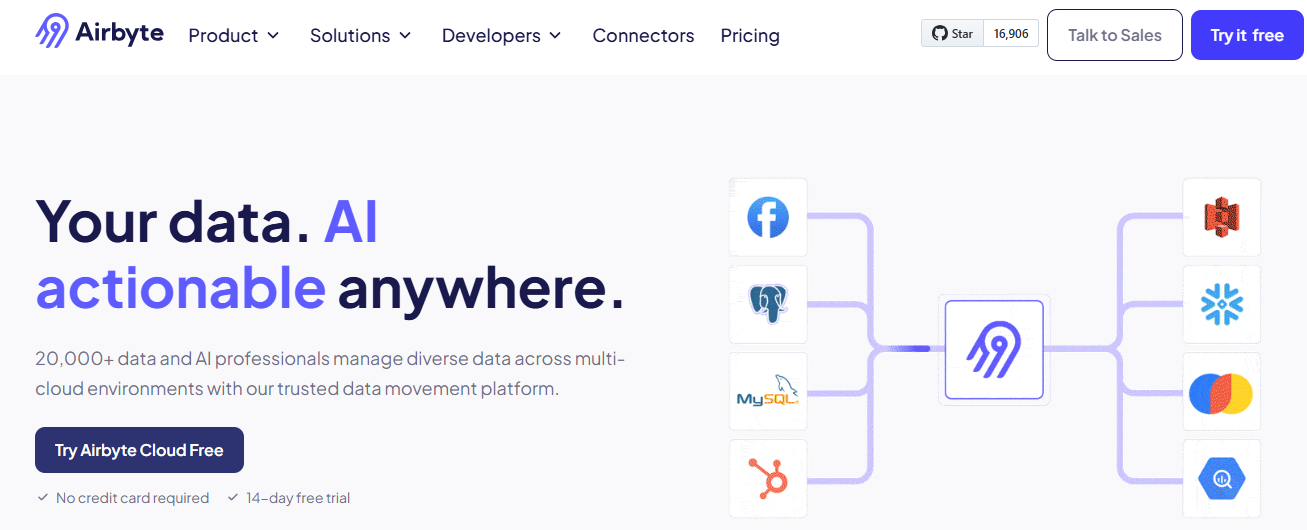
Airbyte's open-source foundation combined with enterprise-grade capabilities makes it particularly valuable for organizations implementing denormalization strategies across diverse data environments. The platform processes over 2 petabytes of data daily, supporting organizations transitioning from legacy ETL platforms to modern cloud-native architectures built on Snowflake, Databricks, and other contemporary data platforms where denormalization strategies prove most effective.
Additional Airbyte features:
- Custom Connector Development – Build connectors with no-code, low-code, or language-specific CDKs; the AI Assistant speeds up configuration.
- Change Data Capture (CDC) – CDC keeps source and destination in sync for consistent denormalized tables, essential for maintaining data integrity across redundant structures.
- Developer-Friendly Pipeline – Use PyAirbyte to ingest data into internal caches (DuckDB, Snowflake, BigQuery), transform with Pandas or LangChain, and load to your target warehouse.
- Enterprise-Grade Security – End-to-end encryption, role-based access control, and comprehensive audit logging ensure denormalized data implementations meet enterprise governance requirements.
- Multi-Deployment Flexibility – Cloud-native, hybrid, and on-premises deployment options support denormalization strategies across diverse infrastructure environments without vendor lock-in.
Conclusion
Data denormalization strategically introduces redundancy to optimize query performance in read-intensive workloads while balancing trade-offs between speed and data integrity. Modern technologies like CDC, cloud-native platforms, and AI-driven optimizations have transformed traditional denormalization approaches, making them more manageable and effective for enterprise environments. Through careful implementation of denormalization techniques and synchronization mechanisms, organizations can achieve significant performance improvements for analytics, reporting, and AI applications while maintaining data consistency.
Frequently Asked Questions
What is data denormalization and why is it used?
Data denormalization is the process of intentionally adding redundancy to a normalized database to speed up query performance. It reduces expensive joins, enabling faster data retrieval in analytics, reporting, and AI workloads.
Does denormalization compromise data integrity?
Yes, but modern systems mitigate this through transactional triggers, Change Data Capture (CDC), and event-driven architectures. These mechanisms help synchronize redundant data and minimize consistency risks.
When should you denormalize your data model?
Denormalize when query complexity or read latency becomes a bottleneck—typically in OLAP systems, real-time analytics, or AI workloads that rely on fast access to consolidated datasets.
What are the main trade-offs of denormalization?
The primary trade-offs are increased storage usage, higher write complexity, and greater maintenance overhead. These are balanced against improved read performance and simpler query logic.
How do cloud platforms like Snowflake or Databricks support denormalization?
They provide elastic scaling, dynamic materialized views, and automated synchronization. Features like Delta Live Tables and Snowflake Dynamic Tables simplify maintaining denormalized structures while controlling costs.

.webp)
